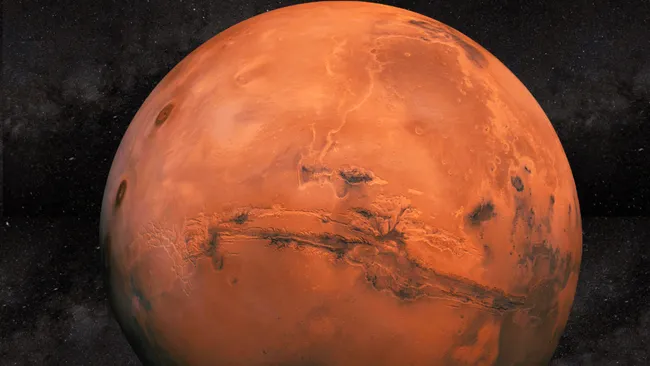What Happened to Mars’ Water? The Ongoing Debate

Mars was once a water-rich world, with vast rivers, lakes, and even oceans. Today, however, the planet is an arid desert, raising a fundamental question: where did all the water go? Some researchers believe a significant portion remains trapped underground, while others argue that alternative explanations must be considered.
A recent challenge to the underground water theory is reigniting this debate, suggesting that Mars may not be hiding as much liquid water beneath its surface as previously thought.
🌊 Mars’ Watery Past and the Mystery of Its Disappearance
Scientists have long known that Mars once had an abundance of liquid water, as evidenced by massive flood-carved channels, ancient river valleys, and mineral deposits that form only in the presence of water. However, how this water vanished remains unclear.
One prevailing theory suggests that much of Mars’ water escaped into space due to the loss of its atmosphere. Another possibility is that it seeped underground, where it remains stored as liquid water or ice. But new research questions just how much water Mars retains beneath its surface.
🔍 Did Mars’ Water Go Underground? New Evidence Challenges the Idea
In 2024, a study led by Vaughan Wright from the Scripps Institution of Oceanography, University of California San Diego, suggested that Mars’ mid-crust is composed of fractured, water-saturated igneous rock. The team based their conclusion on data collected by NASA’s InSight lander, which studied the planet’s internal activity from 2018 until its retirement.
Wright and his colleagues analyzed seismic data from about 10 to 12 kilometers (6-7 miles) beneath Mars’ surface. Their models suggested that if the water stored in the planet’s crust were evenly spread across its surface, it could create a global equivalent layer (GEL) of 1 to 2 kilometers (0.62 to 1.24 miles). For comparison, Earth’s oceans create a GEL of approximately 3.6 kilometers (2.2 miles).
However, Bruce Jakosky, a senior research scientist at the University of Colorado Boulder and former principal investigator for NASA’s MAVEN mission, argues that there may be another explanation.
❄️ Alternative Explanations: Ice or Empty Space?
Jakosky and his team revisited the data and proposed that the pore spaces in Mars’ crust might not be filled with liquid water after all. Instead, these voids could contain solid ice or even be empty.
Jakosky pointed out that while the InSight data does not rule out the presence of liquid water, it also doesn’t confirm it. By considering a broader range of possibilities—including ice and empty pores—he suggested that Mars’ GEL could range from 0 to 2 kilometers (0 to 1.24 miles), rather than the narrower estimate given by Wright’s team.
“We expect there to be water or ice in Mars’ crust,” Jakosky stated. “Actually detecting it and determining its abundance is challenging but crucial for understanding Mars’ history.”
🚀 What’s Next? Future Missions Could Settle the Debate
The debate over Mars’ underground water is far from settled. Future spacecraft equipped with more advanced instruments may be able to provide definitive answers by directly measuring the composition and structure of Mars’ crust.
If liquid water does exist underground, it could have profound implications—not only for understanding Mars’ past climate but also for future exploration and the possibility of sustaining human life on the Red Planet.
For now, the mystery of Mars’ missing water continues to captivate scientists, fueling ongoing research and exploration. The answer, it seems, lies just beneath the surface—waiting to be uncovered.







